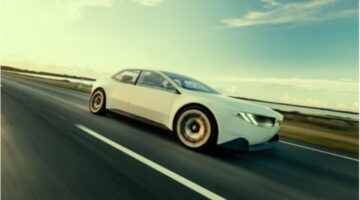Here’s a deliciously subversive thought for you: Stats are ruining enthusiast cars. We use them to rank the latest models, critique them, and deify them. Sometimes the numbers happen to align with a bunch of intangibles, and the car becomes transcendent – like the Ferrari 458 Speciale, a very special thing indeed.
There are cars with great numbers and very little charisma; I’ve driven many of them. And then, there are the number-based narratives that mislead us. For example, the hoopla around the Mazda MX-5’s horsepower, or the continuing lack of a Toyobaru with a turbo – frustrating crosstalk about purist platforms better understood on track than on paper.
The 2017 Aston Martin V12 Vantage S is flawed, old, and weak – so say the insidious numbers. A mechanical watch doesn’t keep time as well as a quartz one, the numbers say. A tube amplifier produces an inferior sound, the numbers say.
The way to fight back is to stop this slavish devotion to the stats and go wind the thing out on good roads in imperfect conditions, which is to my mind the ultimate test of a grand tourer’s competence. Southern California was rocked this winter by wild weather – much of the Angeles Crest Highway that dances along the spine of the San Gabriel Mountains was closed due to heavy snow. So much for Plan A. Some roadside rerouting led to some promising roads, so I pointed the Aston into the curves.
The Aston’s honest appeal begins with the sheetmetal. The Vantage has been part of the Aston stable in the US since late 2005, so it’s in the twilight of its long existence, but it’s also a timeless, contemporary design. It’s smaller in real life than it looks in photos, and the sheetmetal is tightly drawn around its underpinnings. In particular, the Vantage’s nose adopts radii that should have gone extinct with the advent of pedestrian impact standards. Someone obviously spent a lot of time caressing some modeling clay with their bare hands to the look just so. Even without this version’s orange accents, apparently ripped from a Nike shoe, it’s organic and classically beautiful.
The underlying structure is Aston’s VH architecture, composed of extruded and bonded aluminum elements paired with more aluminum, magnesium alloy, composite, and steel. The front and rear splitters are carbon fiber, as is the front grille – although the mesh in the grille and side strakes are titanium.
Despite the knock against numbers, here are a few – and remember they’re not the yardstick. The V12 S is good for 565 horsepower and 457 pound-feet of torque, substantial but not eyebrow-raising figures that inform the Vantage’s thrust and the quality of its power delivery. That V12 has 3,670 pounds to pull around, but it feels lighter than that and has near-perfect front-to-rear weight distribution. Without forced induction, there’s little attenuation between driver input and power output – it’s linear, mechanical, and utterly predictable.
While I’m enthralled by the mechanical-analog aspect of this Aston Martin, technological sophistication is captivating for other reasons. If it’s gizmo-wizardry you seek, there’s not much to be had in the Aston. Mid-drive, my mind kept returning to the McLaren 570GT, a much different take on many of the same sporty touring tropes as the V12 Vantage S for about the same money. It’s a mid-engined, carbon-fiber monocoque job with a bunch of motorsport-derived DNA baked in. It’s a lot of what the V12 Vantage S isn’t – there’s no manual, and it packs a small-displacement, high-reving, twin-turbocharged V8. I love how special the McLaren feels: the exotic noises – high-pitched, whirring, alien – the thrust, the spacecraft interior, how it stands out like a million-watt neon sign in traffic. Despite the incredible physical and philosophical differences between the two, there’s a genre-bending appeal to both. I’d have to imagine that on different days, either might appeal to the same buyer. Maybe on a different day, I’d be torn, too.
But fresh from the Aston, its V12 has my heart – a subjective, and personal, realization. Automakers will keep making techno-savvy cars like the McLaren, but the analog, naturalistic V12 Vantage S is almost certainly the last of its kind. I forgive it its foibles to hear that siren engine howl around another bend.









